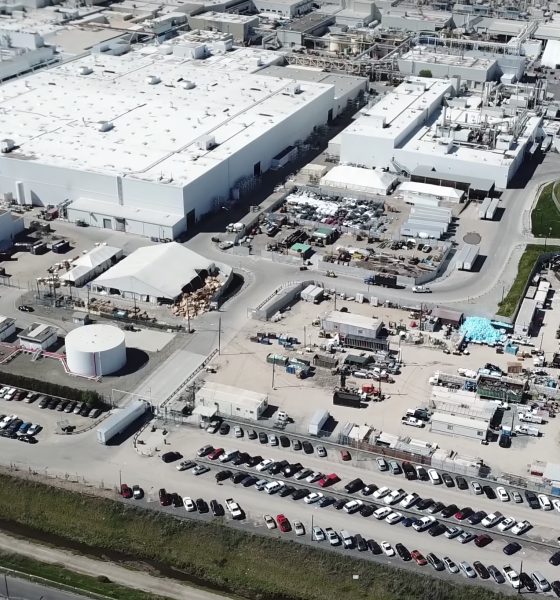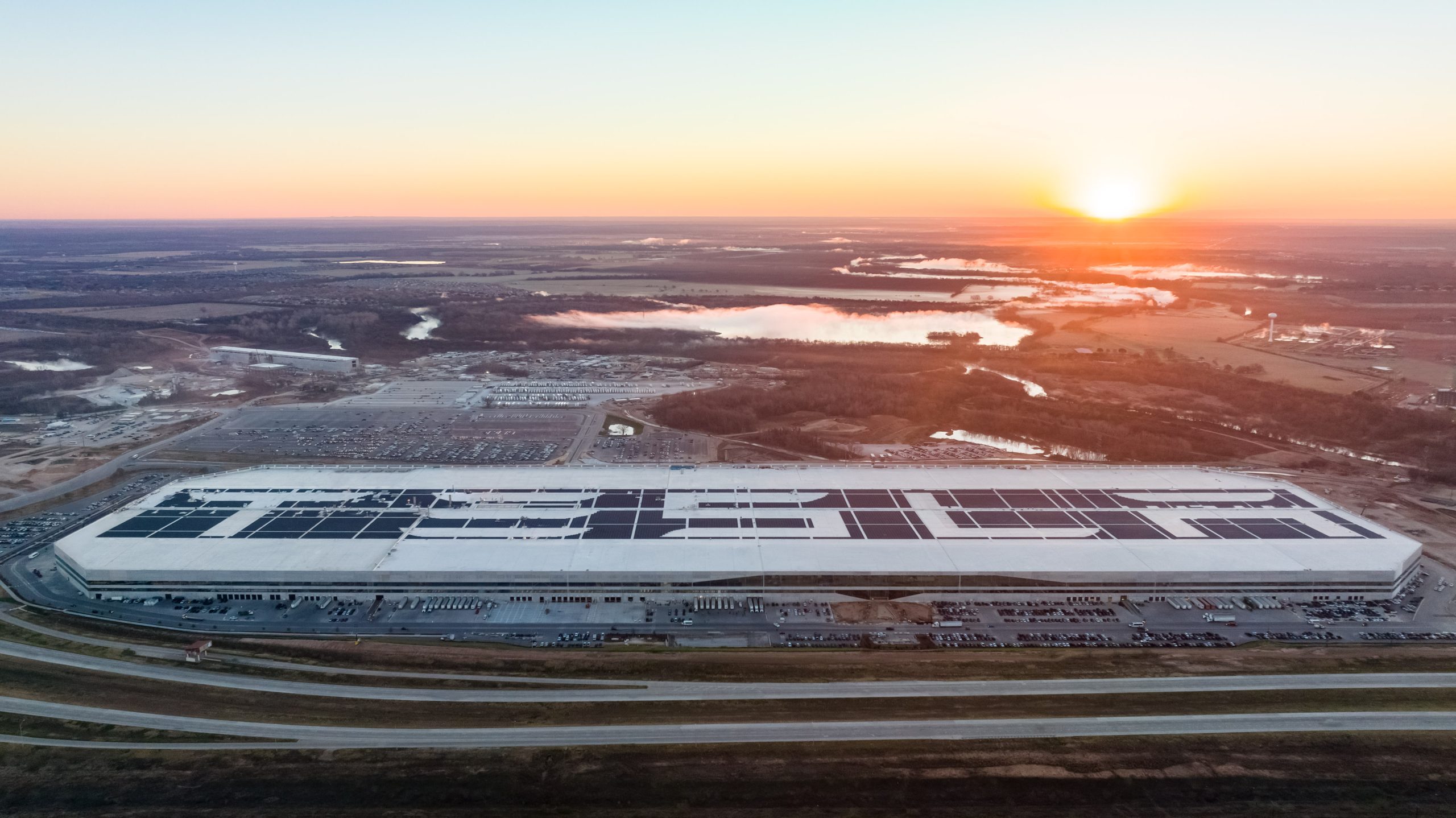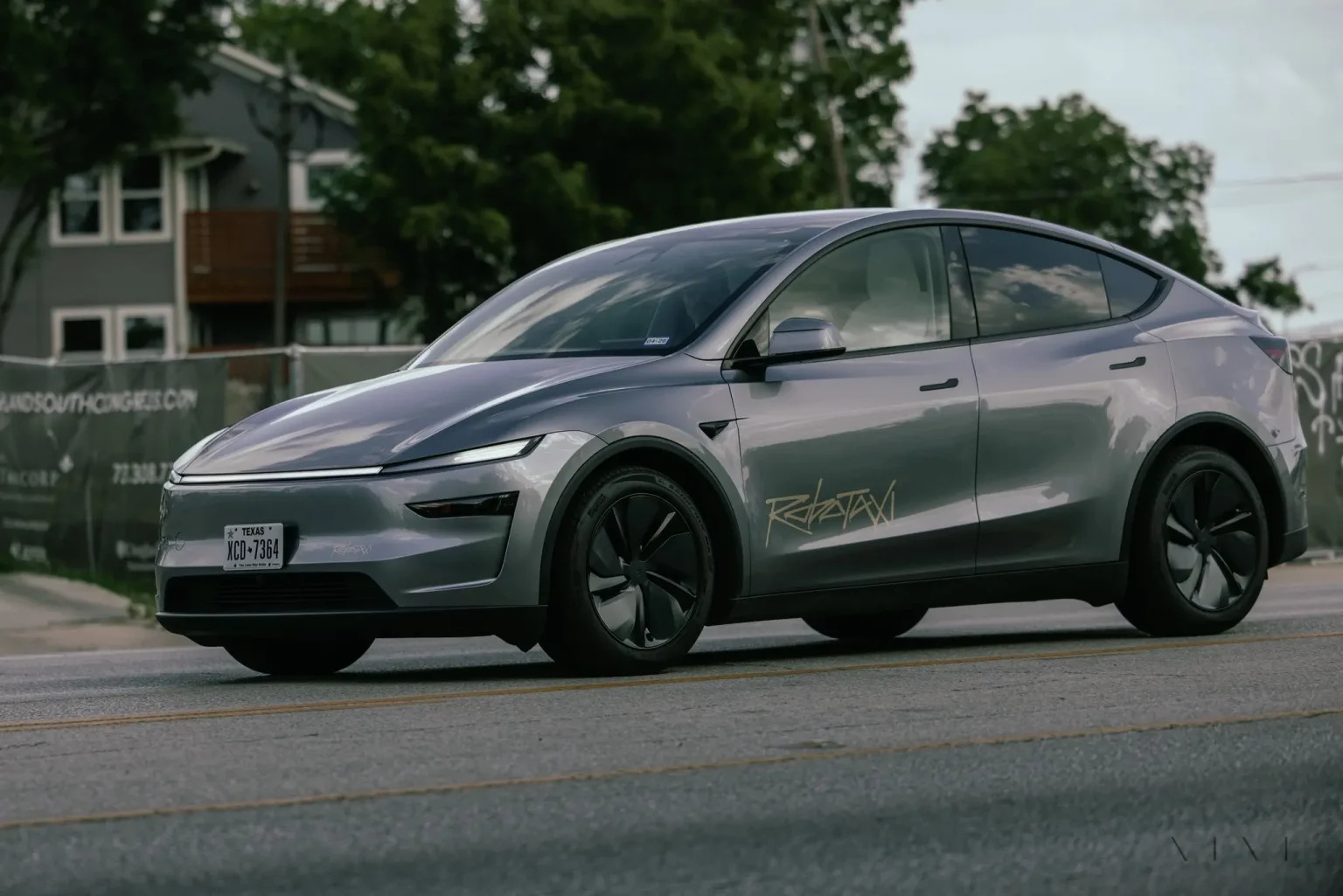

Investor's Corner
Moody’s upgrades Tesla (TSLA) to ‘Stable’ over Model 3 efficiencies, adequate liquidity
Tesla (NASDAQ:TSLA) recently received a positive report and upgrade from Moody’s Investors Service, which changed its outlook towards the electric car maker from “Negative” to “Stable.” In its report, Moody’s affirmed Tesla’s ratings, including the company’s B3 Corporate Family Rating (CFR) and Caa1 senior unsecured ratings. Tesla’s speculative grade liquidity was also changed from SGL-4 (Weak) to SGL-3 (Adequate).
According to the financial firm, Tesla’s B3 CFR reflects the company’s achievements in the production ramp of the Model 3, whose output is “now in line with Moody’s earlier expectations.” This, according to the firm’s report, should allow Tesla to “achieve production efficiencies, lower costs, and strengthen automotive gross margins.” These improvements are also key to offset the losses generated by the company’s automotive service operations, which could then push Tesla towards profitability. Moody’s added that the sale of regulatory credits is expected to give a boost to Tesla’s finances as well.
“An important contributor to achieving net profit will be the sale of regulatory credits, which represent no incremental cost to the company and fall directly to earnings. We expect these sales, which accounted for over $400 million in revenues/earnings during 2018, will continue to grow as emission regulations become more restrictive in all major markets,” Moody’s wrote.
Moody’s stated that it still expects Tesla to generate modestly negative free cash flow of around $500 million over the next 12 months, though the firm expects the electric car maker’s capital expenditures to decrease over this time, thanks to the company’s growing experience in its automotive production business. “Tesla’s increased experience with its production processes have significantly reduced the level of capital expenditures needed to support its growth plans, with annual CapEx falling from approximately $4 billion in 2017 to a current run rate of $1.5 to $2 billion, thus providing a significant boost to expected cash flow,” the firm noted.
Impressively, Moody’s noted that Tesla’s liquidity position is now “Adequate.” The company’s $5 billion in cash, for one, is expected to give the electric car maker a generous cushion to address maturing debt obligations through 2021, as well as address potential operational challenges that it could face in the coming year. Moody’s explains its positive outlook on Tesla’s liquidity as follows.
“Tesla has an adequate liquidity profile supported primarily by its $5 billion cash position. After giving consideration for approximately $1 billion in cash needed to fund normal ongoing operations, and $566 million to cover a November 2019 convertible note maturity, Tesla has incremental liquidity of approximately $3.4 billion. This affords the company an important cushion to contend with potential stress arising from softness in US demand, operational challenges accompanying its European and Chinese expansion plans, and the time that will be necessary to implement additional efficiency-enhancing initiatives,” the firm noted.
Nevertheless, Moody’s argued that Tesla still has notable areas of improvement, particularly in terms of its corporate governance. The firm cites the significant turnover of the company’s senior management ranks including JB Straubel’s recent decision to step aside from his CFO post; the actions of Elon Musk which have resulted in conflicts against the Securities and Exchange Commission; and a board of directors that has “not demonstrated meaningful oversight over the CEO’s activities” as areas of improvement for the electric car maker. While Tesla has been making efforts to improve this, such as the appointment of two new members of its board, Moody’s argues that “Tesla retains a very weak corporate governance structure” nonetheless.
Tesla’s updated rating with Moody’s could be upgraded or downgraded in the future, depending on the company’s performance. The firm noted that it could upgrade Tesla further if the company could demonstrate “sustained profitability and positive free cash flow in the face of rapid expansion plans in Europe and China,” as well as a capability to maintain an adequate liquidity profile. On the other hand, Tesla’s rating could be lowered if demand for its vehicles begins to soften in the United States, or if the company makes missteps in its China and Europe ramp. A downgrade could also happen if Tesla is unable to remain on a clear path towards strengthening margins in its automotive business, while narrowing losses in its other endeavors.
Moody’s full report on Tesla’s recent upgrade could be accessed here.
Disclosure: I have no ownership in shares of TSLA and have no plans to initiate any positions within 72 hours.

Investor's Corner
Tesla stock closes at all-time high on heels of Robotaxi progress

Tesla stock (NASDAQ: TSLA) closed at an all-time high on Tuesday, jumping over 3 percent during the day and finishing at $489.88.
The price beats the previous record close, which was $479.86.
Shares have had a crazy year, dipping more than 40 percent from the start of the year. The stock then started to recover once again around late April, when its price started to climb back up from the low $200 level.
This week, Tesla started to climb toward its highest levels ever, as it was revealed on Sunday that the company was testing driverless Robotaxis in Austin. The spike in value pushed the company’s valuation to $1.63 trillion.
Tesla Robotaxi goes driverless as Musk confirms Safety Monitor removal testing
It is the seventh-most valuable company on the market currently, trailing Nvidia, Apple, Alphabet (Google), Microsoft, Amazon, and Meta.
Shares closed up $14.57 today, up over 3 percent.
The stock has gone through a lot this year, as previously mentioned. Shares tumbled in Q1 due to CEO Elon Musk’s involvement with the Department of Government Efficiency (DOGE), which pulled his attention away from his companies and left a major overhang on their valuations.
However, things started to rebound halfway through the year, and as the government started to phase out the $7,500 tax credit, demand spiked as consumers tried to take advantage of it.
Q3 deliveries were the highest in company history, and Tesla responded to the loss of the tax credit with the launch of the Model 3 and Model Y Standard.
Additionally, analysts have announced high expectations this week for the company on Wall Street as Robotaxi continues to be the focus. With autonomy within Tesla’s sights, things are moving in the direction of Robotaxi being a major catalyst for growth on the Street in the coming year.
Elon Musk
Tesla needs to come through on this one Robotaxi metric, analyst says
“We think the key focus from here will be how fast Tesla can scale driverless operations (including if Tesla’s approach to software/hardware allows it to scale significantly faster than competitors, as the company has argued), and on profitability.”

Tesla needs to come through on this one Robotaxi metric, Mark Delaney of Goldman Sachs says.
Tesla is in the process of rolling out its Robotaxi platform to areas outside of Austin and the California Bay Area. It has plans to launch in five additional cities, including Houston, Dallas, Miami, Las Vegas, and Phoenix.
However, the company’s expansion is not what the focus needs to be, according to Delaney. It’s the speed of deployment.
The analyst said:
“We think the key focus from here will be how fast Tesla can scale driverless operations (including if Tesla’s approach to software/hardware allows it to scale significantly faster than competitors, as the company has argued), and on profitability.”
Profitability will come as the Robotaxi fleet expands. Making that money will be dependent on when Tesla can initiate rides in more areas, giving more customers access to the program.
There are some additional things that the company needs to make happen ahead of the major Robotaxi expansion, one of those things is launching driverless rides in Austin, the first city in which it launched the program.
This week, Tesla started testing driverless Robotaxi rides in Austin, as two different Model Y units were spotted with no occupants, a huge step in the company’s plans for the ride-sharing platform.
Tesla Robotaxi goes driverless as Musk confirms Safety Monitor removal testing
CEO Elon Musk has been hoping to remove Safety Monitors from Robotaxis in Austin for several months, first mentioning the plan to have them out by the end of 2025 in September. He confirmed on Sunday that Tesla had officially removed vehicle occupants and started testing truly unsupervised rides.
Although Safety Monitors in Austin have been sitting in the passenger’s seat, they have still had the ability to override things in case of an emergency. After all, the ultimate goal was safety and avoiding any accidents or injuries.
Goldman Sachs reiterated its ‘Neutral’ rating and its $400 price target. Delaney said, “Tesla is making progress with its autonomous technology,” and recent developments make it evident that this is true.
Investor's Corner
Tesla gets bold Robotaxi prediction from Wall Street firm
Last week, Andrew Percoco took over Tesla analysis for Morgan Stanley from Adam Jonas, who covered the stock for years. Percoco seems to be less optimistic and bullish on Tesla shares, while still being fair and balanced in his analysis.

Tesla (NASDAQ: TSLA) received a bold Robotaxi prediction from Morgan Stanley, which anticipates a dramatic increase in the size of the company’s autonomous ride-hailing suite in the coming years.
Last week, Andrew Percoco took over Tesla analysis for Morgan Stanley from Adam Jonas, who covered the stock for years. Percoco seems to be less optimistic and bullish on Tesla shares, while still being fair and balanced in his analysis.
Percoco dug into the Robotaxi fleet and its expansion in the coming years in his latest note, released on Tuesday. The firm expects Tesla to increase the Robotaxi fleet size to 1,000 vehicles in 2026. However, that’s small-scale compared to what they expect from Tesla in a decade.
Tesla expands Robotaxi app access once again, this time on a global scale
By 2035, Morgan Stanley believes there will be one million Robotaxis on the road across multiple cities, a major jump and a considerable fleet size. We assume this means the fleet of vehicles Tesla will operate internally, and not including passenger-owned vehicles that could be added through software updates.
He also listed three specific catalysts that investors should pay attention to, as these will represent the company being on track to achieve its Robotaxi dreams:
- Opening Robotaxi to the public without a Safety Monitor. Timing is unclear, but it appears that Tesla is getting closer by the day.
- Improvement in safety metrics without the Safety Monitor. Tesla’s ability to improve its safety metrics as it scales miles driven without the Safety Monitor is imperative as it looks to scale in new states and cities in 2026.
- Cybercab start of production, targeted for April 2026. Tesla’s Cybercab is a purpose-built vehicle (no steering wheel or pedals, only two seats) that is expected to be produced through its state-of-the-art unboxed manufacturing process, offering further cost reductions and thus accelerating adoption over time.
Robotaxi stands to be one of Tesla’s most significant revenue contributors, especially as the company plans to continue expanding its ride-hailing service across the world in the coming years.
Its current deployment strategy is controlled and conservative to avoid any drastic and potentially program-ruining incidents.
So far, the program, which is active in Austin and the California Bay Area, has been widely successful.








